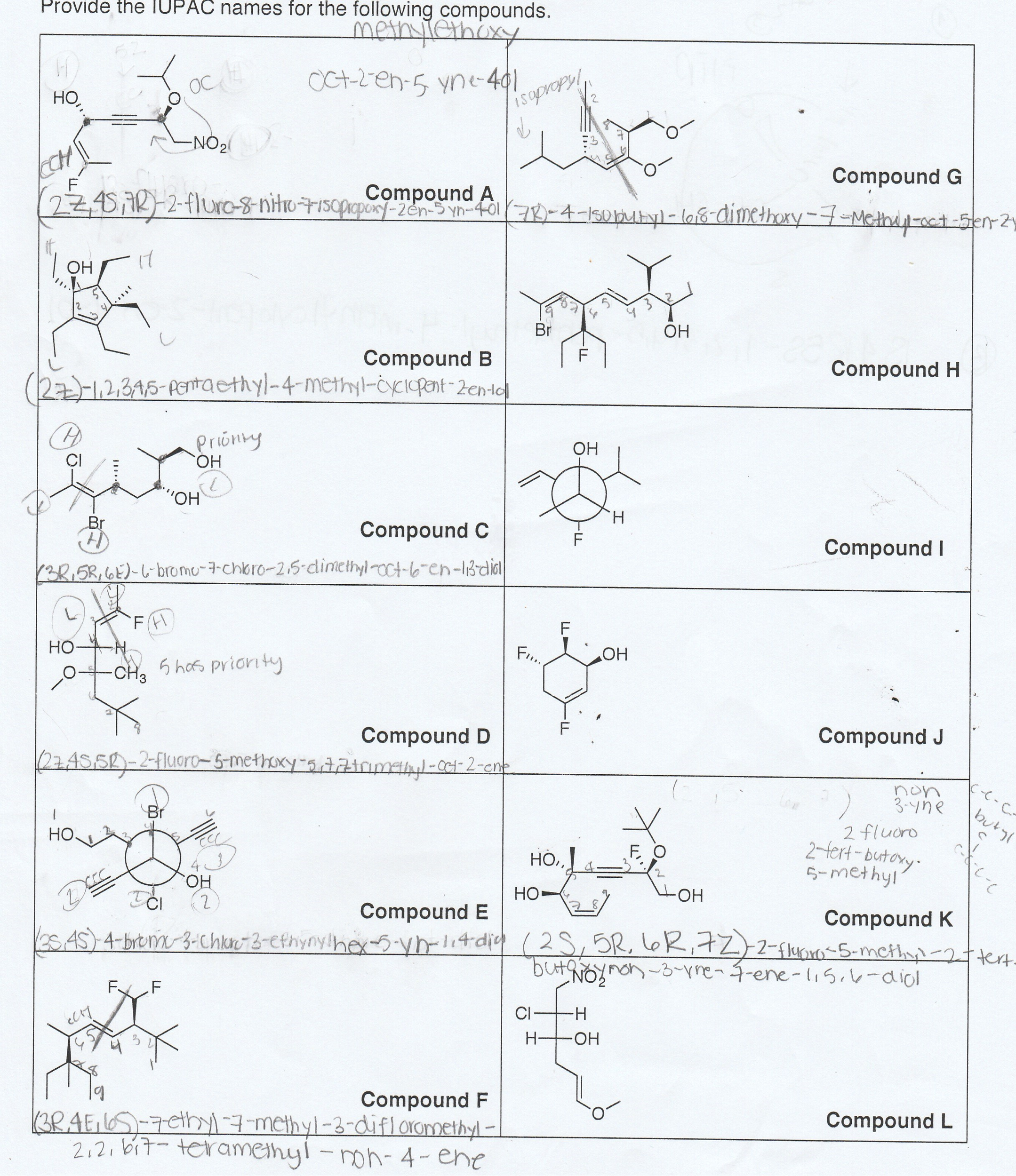
Note: Naming of compounds containing complex substituent (alkyl group) :Īn alkyl substituent having substituents within itself is named in bracket by putting number outside. if more than one substituents are present then they are written in the alphabetical order. If substituents are present at equivalent position, follow alphabetical order. Hence (2,2,4) is lowest set of numbering and is correct numbering. Note : Here the first locant is same (i.e 2) so compare second locant which is 2 and 4 in (2,2,4) and (2,4,4). Locant is a number that locate the position of substituent. Lowest locant rule: Carbon bearing the substituent gets the lowest possible locant. If two or more equally long chains are present, the chain with maximum number of substituent is selected as the parent chain. Step-I : Selection of parent chain : The longest continuous carbon chain is selected as the parent chain. There are only three steps in nomenclature of all organic compounds. IUPAC Nomenclature of organic compounds containing carbon to carbon single bonds and substituents only : Compounds containing more than one functional groups ( polyfunctional compounds). Compounds containing one functional group ( monofunctional compounds). Compounds containing multiple bonds ( double/ triple bonds) too. Compounds containing carbon to carbon single bonds and substituents only. To simplify the nomenclature process, differentiate the organic compounds in four categories as, Naming of all organic compounds can be done in three steps as, General steps for IUPAC nomenclature of organic compounds: Sometimes, in case of compounds having polyfunctional groups, functional groups may be considered as prefixes. Prefix : It indicates the substituent ( i.e any group bonded with parent carbon chain except main functional group). Secondary suffix : It indicates the parent(main) functional group present in the compound. Primary suffix : It indicates the nature of carbon to carbon bond in the parent carbon chain. Word root : It indicates the parent carbon chain, which is the the longest continuous chain of carbon atoms including functional group and multiple bonds( if present). Now see the four parts ( prefix, word root, bond and functional group) separately.ġ.

IUPAC name of all compounds contain word root and primary suffix but prefix and secondary suffix may not be present because all organic compounds must contain carbon chain and bond but substituent and functional group may not be present. Thus, general format for IUPAC name of all compounds is: ‘ol’ tells that there is –OH group(alcohol) as functional group. ‘en’ tells that there is at least one carbon to carbon double bond. ‘hex’ tells that there are 6 carbon atoms on parent carbon chain. ‘methyl’ tells that –CH 3 is present as substituent.


In the given example “5-methylhex-3-en-2-ol” there are 4 pieces- ‘methyl’, ‘hex’, ‘en’ and ‘ol’. To understand the name you need to take the name to pieces. This is a method of naming the organic compounds as recommended by the international Union of Pure and Applied Chemistry (IUPAC).Įach part of the IUPAC name gives you some useful information about the compound.īefore starting the IUPAC rules, lets see an example of organic compound and it’s IUPAC name. IUPAC Nomenclature of organic compounds containing more than one functional groups ( polyfunctional compounds) :.IUPAC Nomenclature of organic compounds containing one functional group ( monofunctional compounds):.IUPAC Nomenclature of organic compounds containing multiple bonds(double/triple bond) too.IUPAC Nomenclature of organic compounds containing carbon to carbon single bonds and substituents only :.General steps for IUPAC nomenclature of organic compounds:.


 0 kommentar(er)
0 kommentar(er)
